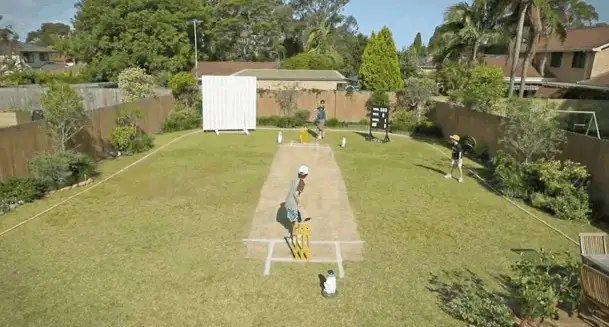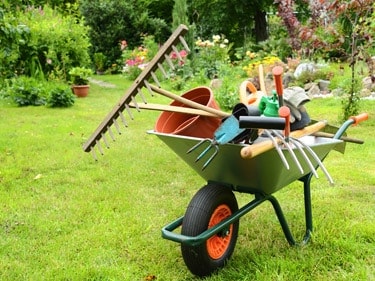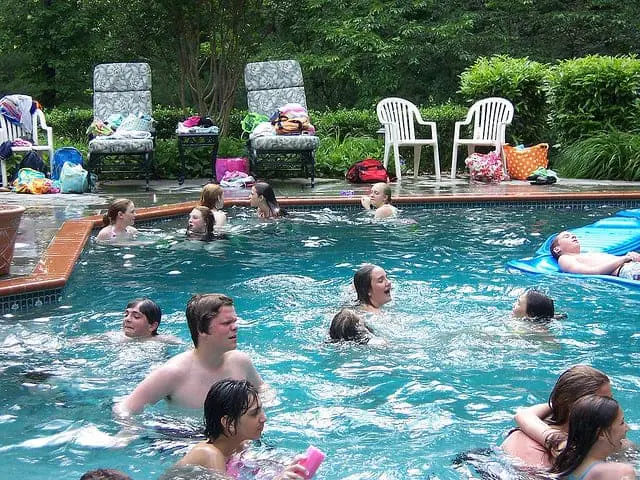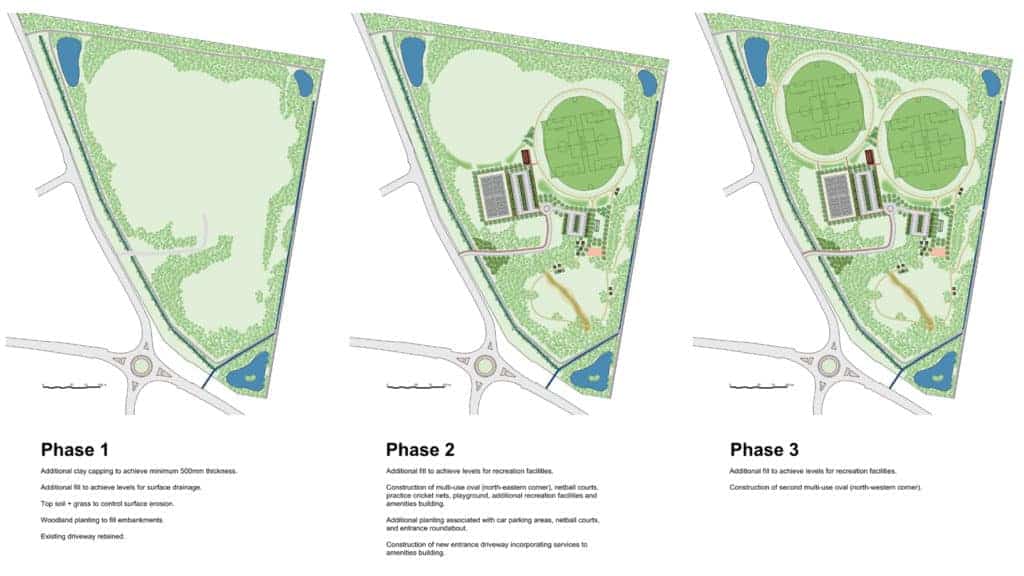This is part 2 in a series on how important context is when using images as inspiration for generating your own garden design ideas. In it I take a look at clients – the owners of the property and/ or the people who commissioned or created the garden themselves.
Part One of the Context is Everything! series provided an overview covering my personal motto –“Context Is Everything!”. It introduced the idea that what you see in a single image is only a small part of a bigger, uglier story. Understand that what you don’t see in the image is more important than what you do see.
So this post explores clients – the people who paid/ built the garden – and the time, effort, and money they put into it.
One of the first things you should consider when looking at an image is who are the clients?
Often this is overlooked – unless the image comes from an expose on their garden. Even then, what you see is ALWAYS the best possible view, of them and their garden.
Most images won’t tell you anything about the clients at all. And this is vital information. Unless these people are you (which I’m assuming they aren’t) they will have a vastly different approach to both building the garden and caring for it.
This list below outlines some of the things to consider when drooling over another beautiful landscape.
Client Lifestyle
Who are these people?
Are they working? Retired?
Do they spend all their time outdoors? Are they always at home, or away on holiday?
If you know nothing about the clients and their lifestyle, you are probably underselling their investment in their garden. And the way they live may be very different to the way you live.
Client Funds
The image you have is influenced by how much money the clients have. Not only that, but how much they are willing to spend.
While it may look incredible and even doable, there are many costs that come up in design and construction. Trying to copy a design straight from an image to your garden is a sure fire way to quickly increase your costs.
Time
Time comes in two forms.
First – the amount of time the clients could devote to the project during its construction (especially if they built it themselves).
Second – the amount of time they can afford to spend in the garden itself.
The more time you spend outside, the more likely you are to design it with a specific purpose in mind, to match whatever activity you enjoy doing.
If the clients have the time (and favourable climate) to spend all their time outdoors, chances are they care a lot more about the following point than your average Joe.
Clients commitment to maintenance
If these clients love pottering about the garden, they will definitely care more about maintenance of the garden itself.
Think cutting and pruning and spraying and weeding and re-potting and composting and raking and sweeping and watering and on and on… The image you have may look incredible because the owners treat its maintenance like a full time job.
Another consideration you cannot know is if they outsource their maintenance. Maybe they are filthy rich and simply hire a team of gardeners who spend hours hand cutting blades of grass and measuring every dimension to make sure everything is level.
Therefore unless you can turn yourself into five different people, getting your garden to stay in a similar condition to the one in the photo may be impossible.
Clients specific wants and needs
This gets ignored A LOT when looking at photos.
Unless you were witness to the entire design process, chances are you won’t know what the clients requested in their design.
Good design is about providing what the clients want, within their budget, and using the existing landscape to make it happen. And doing this without simply cutting and pasting something from one place to another.
Going back to the previous point – the clients may love gardening, and have designed the garden in such a way as to maximise their time spent outdoors throughout the year.
Or, they may hate it – and wanted a garden with zero maintenance and automated everything.
All of this goes beyond maintenance and considers every activity the clients wanted to do in the backyard, as well as all the people who may be using it.
By just cutting and pasting an image into your garden, you may find something you hate becomes the centerpiece of your new backyard.

Client family dynamic
How many people live there?
How many use the garden?
For what purposes?
And how often?
Often a single image tells you nothing about the composition of the family – other than basic generalisations such as ‘play sport’ when looking at a tennis court, lawn or swimming pool.
As a result you have no idea how old the children are (if they even have any!). Or whether they are young and growing, sullen teens, or adults who have left the nest (or still live in the basement/ attic).
Generally pets are also absent. Often they have to be designed around when looking at plant selections (young kids also need some thought).
Similarly to wants and needs, if you don’t understand who the family is and how they use the garden, you may find that this beautiful image may not match your family at all.
Client plans for the future
Like the previous point, what are these clients’ plans for the future?
Are the kids young and growing up, with another 15 years of use? Or have they moved out and the parents can change/ add a few things now they have the space?
Do these clients plan on spending the rest of their lives here? Will they look to sell at some point in the future?
And how has this impacted their decisions around their garden (is it geared specifically to their needs, or with an idea to appeal to a specific market when selling in the future)?
Without knowing the clients plans for their garden, how they want it to change throughout its life, it’s tricky trying to make your plans (playing out in your design) fit another’s.
Sometimes it may be impossible to find out any information about the clients. Especially if you are looking at small tips or tricks, rather than complete garden designs. Here is one tip to try to find more information about the image, using Google’s Image Search tool.
Google’s Image Search Tool
- Start by opening a new tab on your browser.
- Go to the main Google homepage.
- In the top right hand corner, there should be a list of words, often including Images. If you can’t see it there, click the small series of 9 dots (the menu) and select Images from there.
- On the right hand side of the search bar in the centre of the page, there is a camera icon. Click on it.
- This brings up a central panel that allows you to upload images or input a url. You don’t need to do either.
- Simply go back to your original image, click and hold on it, and drag it up towards your Google Images tab on your browser.
- Allow the page to switch over, still holding the button down with the image. Drag the mouse into the central panel area.
- Google should then begin the search, looking for other websites that have this image.
- A new list of images (hopefully the same, along with extra options) should pop up.
- Many of these may just be blog posts or pinterest sites that have also shared the image. It may require a small search down a few sites until you find some more images or more information.
- At best you’ll find the original link – perhaps a personal blog, or with more information about the clients and their site.
- At worst you’ll find nothing useful other than some more of the same images. However, you have learnt how to quickly search for images in the future.
So, if you can more information on the clients behind the garden – great!
But if not, keep in mind that many people have different wants, needs, budgets and plans than you.
If something looks amazing and impeccable, then a lot of time, money and exasperation went into getting there. Ask yourself “Is it worth it for my garden?“
TAKE ACTION: GOOGLE IMAGE SEARCH YOUR IMAGE TO FIND MORE INFORMATION ON IT
If you can’t find any additional information, try to estimate a few of the points below:
- What age is the family (children and parents)? Young, middle age, old?
- How wealthy are the clients? Do the materials and finishes look very expensive? Lots of stone, glass or trendy outdoor furniture?
- Is there anything specific the clients may have requested in the design? This includes obvious items, like a pool or tennis court, or simpler items like a veggie patch or sandpit. Do you have similar requirements to match your wants and needs?
- Do the clients spend a lot of time outdoors? Is the garden high maintenance? Does the design rely on clean and smooth lines? Does it appear to require a lot of cutting, trimming, pruning or weeding?
- How will the garden look in 20 years? Take a guess if anything will change, and how plants may grow and change the garden over time.
Once you have an idea of the clients, you can compare some of the answers to your own situation.
Does it work for you? What do you agree with? What do you change?







